
A potato chip or crisp is a thin slice of potato that has been deep fried, baked, or air fried until crunchy. They are commonly served as a snack, side dish, or appetizer. The basic chips are cooked and salted; additional varieties are manufactured using various flavorings and ingredients including herbs, spices, cheeses, other natural flavors, artificial flavors, and additives.

Origami is the Japanese art of paper folding. In modern usage, the word "origami" is often used as an inclusive term for all folding practices, regardless of their culture of origin. The goal is to transform a flat square sheet of paper into a finished sculpture through folding and sculpting techniques. Modern origami practitioners generally discourage the use of cuts, glue, or markings on the paper. Origami folders often use the Japanese word kirigami to refer to designs which use cuts.

An envelope is a common packaging item, usually made of thin, flat material. It is designed to contain a flat object, such as a letter or card.

A thermoplastic, or thermosoftening plastic, is any plastic polymer material that becomes pliable or moldable at a certain elevated temperature and solidifies upon cooling.
In philately, gum is the substance applied to the back of a stamp to enable it to adhere to a letter or other mailed item. The term is generic, and applies both to traditional types such as gum arabic and to synthetic modern formulations. Gum is a matter of high importance in philately.
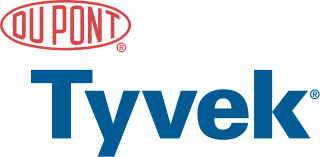
Tyvek is a brand of synthetic flashspun high-density polyethylene fibers. The name Tyvek is a registered trademark of the American multinational chemical company DuPont, which discovered and commercialized Tyvek in the late 1950s and early 1960s.

The Smith's Snackfood Company is a British-Australian snack food brand owned by the American multinational food, snack, and beverage corporation PepsiCo. It is best known for its brand of potato crisps. The company was founded by Frank Smith and Jim Viney in the United Kingdom in 1920 as Smith's Potato Crisps Ltd, originally packaging a twist of salt with its crisps in greaseproof paper bags which were sold around London. The dominant brand in the UK until the 1960s when Golden Wonder took over with Cheese & Onion, Smith's countered by creating Salt & Vinegar flavour which was launched nationally in 1967.

A paper bag is a bag made of paper, usually kraft paper. Paper bags can be made either with virgin or recycled fibres to meet customers' demands. Paper bags are commonly used as shopping carrier bags and for packaging of some consumer goods. They carry a wide range of products from groceries, glass bottles, clothing, books, toiletries, electronics and various other goods and can also function as means of transport in day-to-day activities.

Kraft paper or kraft is paper or paperboard (cardboard) produced from chemical pulp produced in the kraft process.

Nonwoven fabric or non-woven fabric is a fabric-like material made from staple fibre (short) and long fibres, bonded together by chemical, mechanical, heat or solvent treatment. The term is used in the textile manufacturing industry to denote fabrics, such as felt, which are neither woven nor knitted. Some non-woven materials lack sufficient strength unless densified or reinforced by a backing. In recent years, non-wovens have become an alternative to polyurethane foam.

Tracing paper is paper made to have low opacity, allowing light to pass through. Its origins date back to at least the 1300s where it was used by artists of the Italian Renaissance. In the 1880s, tracing paper was produced en masse, used by architects, design engineers, and artists. Tracing paper was key in creating drawings that could be copied precisely using the diazo copy process. It then found many other uses. The original use for drawing and tracing was largely superseded by technologies that do not require diazo copying or manual copying of drawings.
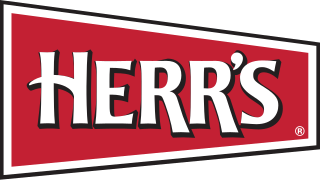
Herr's is an American brand of potato chips and other snack foods produced and marketed by eponymous private American company Herr Foods Inc. based in Nottingham, Pennsylvania. Their products are sold primarily throughout the Eastern United States and Canada and they have a stronghold in the Mid-Atlantic region. Their products are sold in all 50 American states and in over 40 countries.
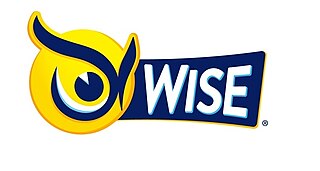
Wise Foods, Inc. is a company based in Berwick, Pennsylvania, that makes snacks and sells them through retail food outlets in 15 eastern seaboard states, as well as Vermont, Ohio, West Virginia, Kentucky, Tennessee, and Washington, D.C. Best known for its several varieties of potato chips, Wise also offers Cheez Doodles, bagged popcorn, tortilla chips, pork rinds, onion rings, Dipsy Doodle chips, nachos, Quinlan brand pretzels, and French onion dips.

Stockbooks are storage books used by stamp collectors for storage of postage stamps placed in pockets, on pages, for easy viewing. Other philatelic items, such as plate blocks, miniature sheets, covers, lettersheets, etc., can be stored in stockbooks.

Parchment paper, also known as baking paper, is a cellulose-based paper whose material has been processed so as to obtain additional properties such as non-stickiness, grease resistance, resistance to humidity and heat resistance. It is commonly used in baking and cooking as a disposable non-stick paper. It is greaseproof paper that can be used for several different applications, its surface prevents the food from sticking, and also is highly heat-resistant and can be used in temperatures up to 220°C. It should not be confused with waxed paper, which is paper that has been coated with wax.

Drug packaging is process of packing pharmaceutical preparations for distribution, and the physical packaging in which they are stored. It involves all of the operations from production through drug distribution channels to the end consumer.

Currency packaging includes several forms of packing cash for easy handling and counting. Many systems use standard color-coding or are marked to indicate the amount in the package.

A security bag is a heavy duty bag used to contain high-value products, documents or legally sensitive items. Envelopes with security features are called security envelopes as well as security bags. Cash for deposit in a bank is often placed in a special deposit bag with security features. When they are used to contain items related to a crime, special evidence bags are used. Authentication of signatures and chain of custody are often required.
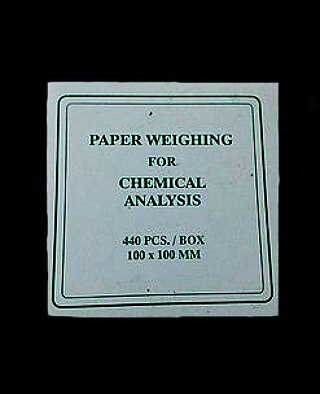
Weighing paper is often used when weighing solid, powdery substances on an analytical balance. By preventing the substance from making contact with unwanted materials, the precision of the measurement may be increased.
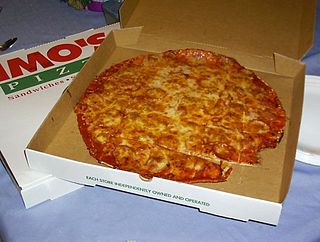
The pizza box or pizza package is a folding packaging box usually made of corrugated fiberboard in which hot pizzas are stored for take-out. The pizza box also makes home delivery and takeaway substantially easier. The pizza box has to be highly resistant, cheap, stackable, thermally insulated to regulate humidity and suitable for food transportation. In addition, it provides space for advertising. The pizza packages differ from those of frozen pizzas, which contain the frozen product in heat-sealed plastic foils as is the case with much frozen food.




















